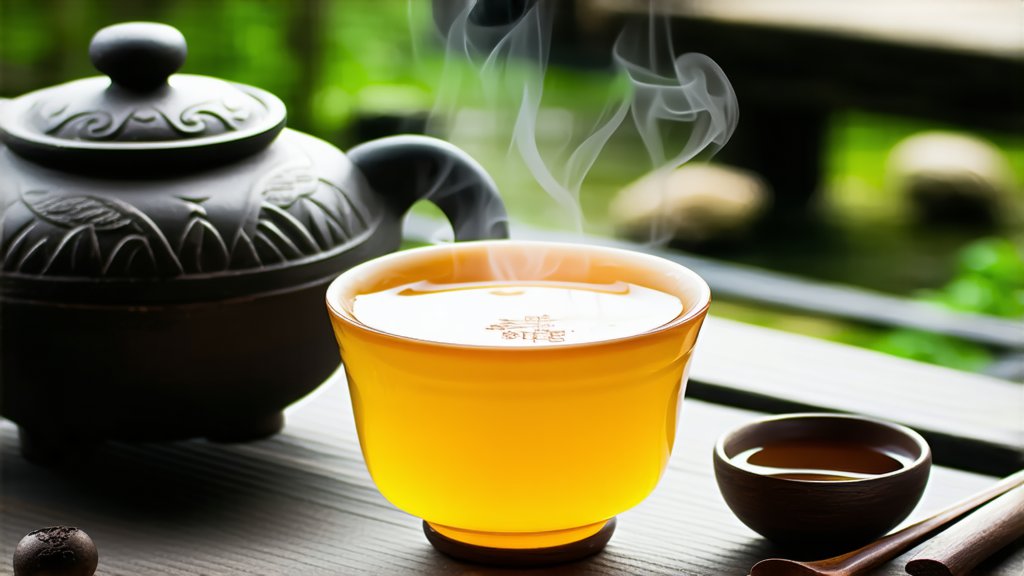
In the vast and diverse tapestry of Chinese tea culture, few varieties captivate the senses and imagination quite like Junshan Yinzhen, a revered type of yellow tea. This golden elixir, hailing from the misty mountains of Hunan province, boasts a rich history intertwined with imperial favor, meticulous craftsmanship, and a unique flavor profile that sets it apart in the world of tea. For international enthusiasts seeking to delve into the depths of this exquisite beverage, let us embark on a journey through its storied past, intricate production process, and the art of its appreciation.
A Glimpse into History
Junshan Yinzhen, often referred to as "Silver Needle" due to its slender, hair-like appearance, traces its origins back to the early Qing Dynasty (1644-1912). Legend has it that this tea was first discovered by a local farmer who stumbled upon wild tea plants growing amidst the verdant slopes of Junshan Mountain. Recognizing their potential, he began cultivating these plants, which soon gained popularity for their exceptional quality. By the mid-1700s, Junshan Yinzhen had earned imperial recognition, becoming a cherished tribute tea reserved for the emperor and his court. Its reputation as a symbol of purity and refinement endures to this day.
The Varieties of Junshan Yinzhen
While Junshan Yinzhen primarily refers to a single variety of yellow tea, it encompasses a range of grades based on the picking standard and processing techniques. The highest grade, known as "Classic Junshan Yinzhen," consists solely of the youngest, most tender buds, harvested before the leaves have fully unfurled. These buds are carefully selected, ensuring only those with a downy white coating ("huaishao") are used. Lower grades may include a mix of buds and young leaves, but they too adhere to strict quality controls to maintain the tea's distinctive character.
The Art of Craftsmanship
The production of Junshan Yinzhen is an intricate dance between nature and human skill. It all begins with the careful handpicking of the freshest shoots during the spring months, typically in April or early May. Timing is crucial, as plucking too early or too late can significantly impact the tea's flavor and aroma.
Once harvested, the tea undergoes a series of meticulous steps designed to transform its vibrant green hue into the characteristic golden color associated with yellow teas. The initial stage involves withering, where the freshly picked leaves are spread out in a well-ventilated area to lose moisture and soften. This process can take several hours and is closely monitored to prevent over-withering, which could lead to bitterness.
Next comes the critical "sealing yellow" phase, a hallmark of yellow tea production. The withered leaves are gently heated in a wok or pan at low temperatures, a technique that inhibits enzymatic oxidation while allowing a controlled degree of non-enzymatic browning. This step imbues the tea with its signature golden hue and subtle sweetness. The leaves are then shaped and dried, often through a combination of rolling and baking, until they reach the desired level of dryness.
Finally, the dried tea undergoes a final sorting process to remove any imperfections, ensuring that only the finest needles make it into the packaged product. Each step in this labor-intensive process requires the expertise of seasoned tea masters who have honed their skills over generations.
Savoring the Symphony of Flavors
To truly appreciate Junshan Yinzhen, one must engage in the ritual of tea tasting, or "pincha." This sensory experience involves not just drinking, but observing, smelling, and feeling the tea in its entirety. Begin by admiring the dry leaves, noting their slender shape and silvery sheen. As you measure approximately 3-5 grams of loose leaves into a preheated gaiwan or teapot, place them under your nose and inhale deeply to detect the tea's delicate aroma, which often evokes hints of fresh hay, chestnuts, and a subtle floral note.
When brewing, use water heated to around 80-85°C (175-185°F) to avoid scalding the tender leaves. Pour the water gently over the leaves, allowing them to unfurl slowly and release their flavors. The first infusion, typically yields a pale golden liquor with a light, refreshing taste, while subsequent steepings may reveal deeper notes of complexity, including a natural sweetness and a lingering aftertaste that resonates on the palate.
To fully immerse yourself in the tea-drinking experience, pay attention to the texture of the liquid as it slides across your tongue and the subtle changes in flavor from start to finish. Junshan Yinzhen is best enjoyed slowly, savoring each sip and reflecting on the centuries-old tradition that brought this remarkable tea to your cup.
Conclusion
Junshan Yinzhen stands as a testament to the artistry and dedication inherent in Chinese tea culture. From its imperial beginnings to its status as a prized delicacy today, this yellow tea embodies the harmony between nature's bounty and human ingenuity. Whether you are a seasoned tea connoisseur or a curious newcomer, exploring Junshan Yinzhen offers a window into a world where every leaf tells a story, and every brew is a celebration of life's simple yet profound pleasures.